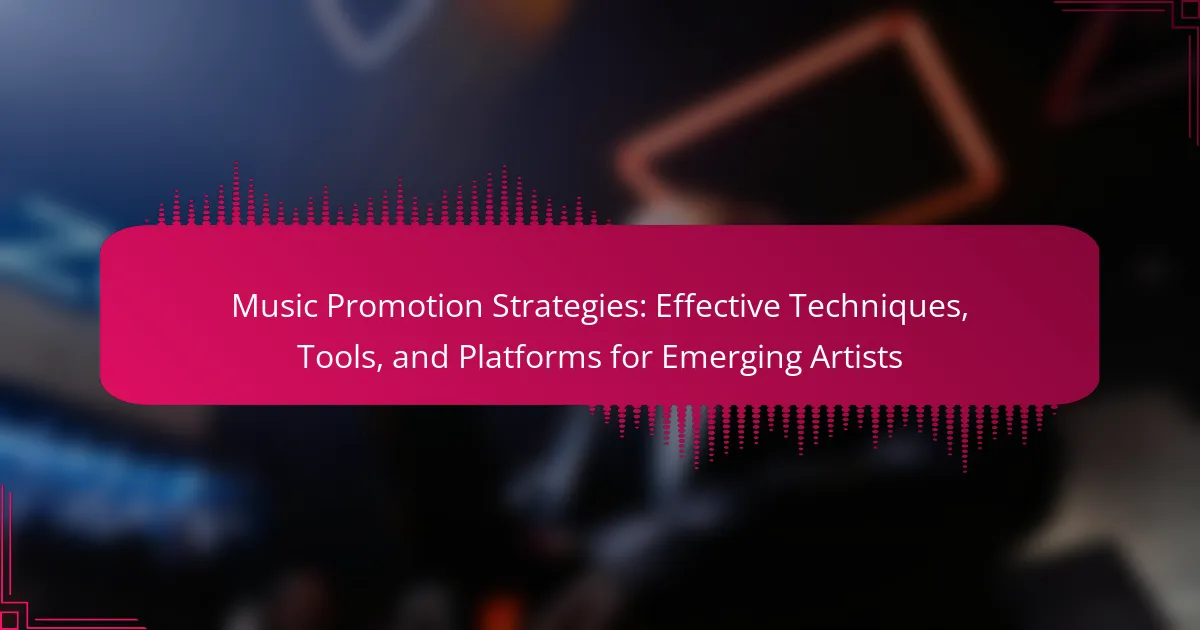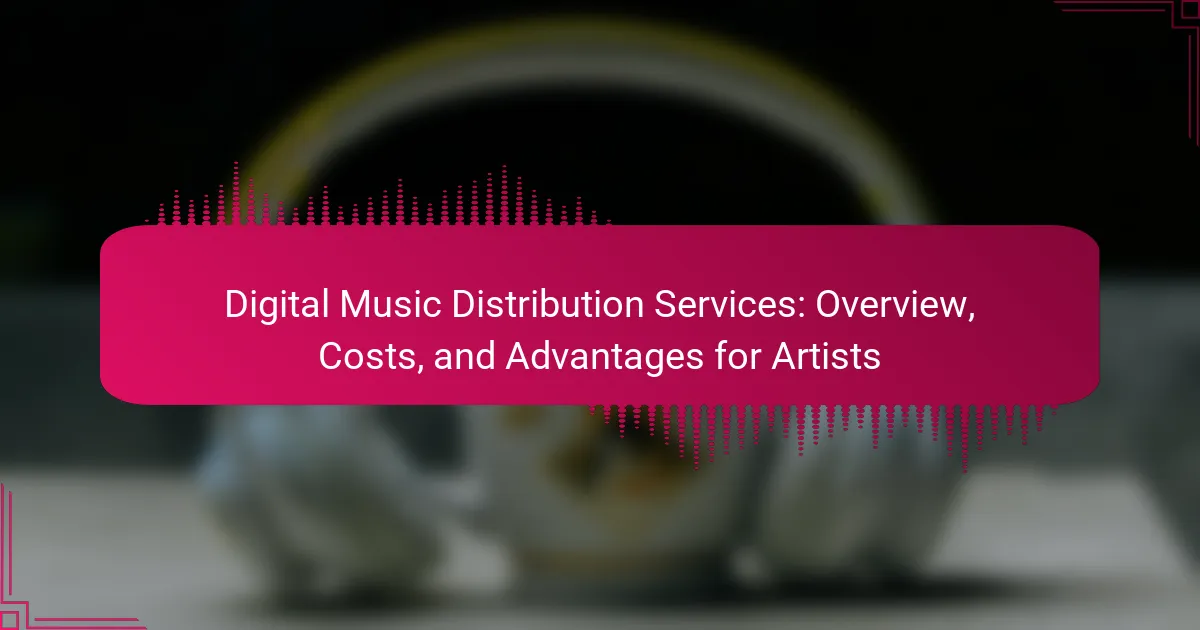Independent artists can unlock significant revenue and exposure through music licensing opportunities. This article explores various types of licenses, including synchronization, performance rights, and mechanical licensing. It outlines the benefits of these licenses, such as legal protection and increased audience reach. Additionally, it details the application processes and highlights the importance of networking and regional considerations in maximizing licensing potential.
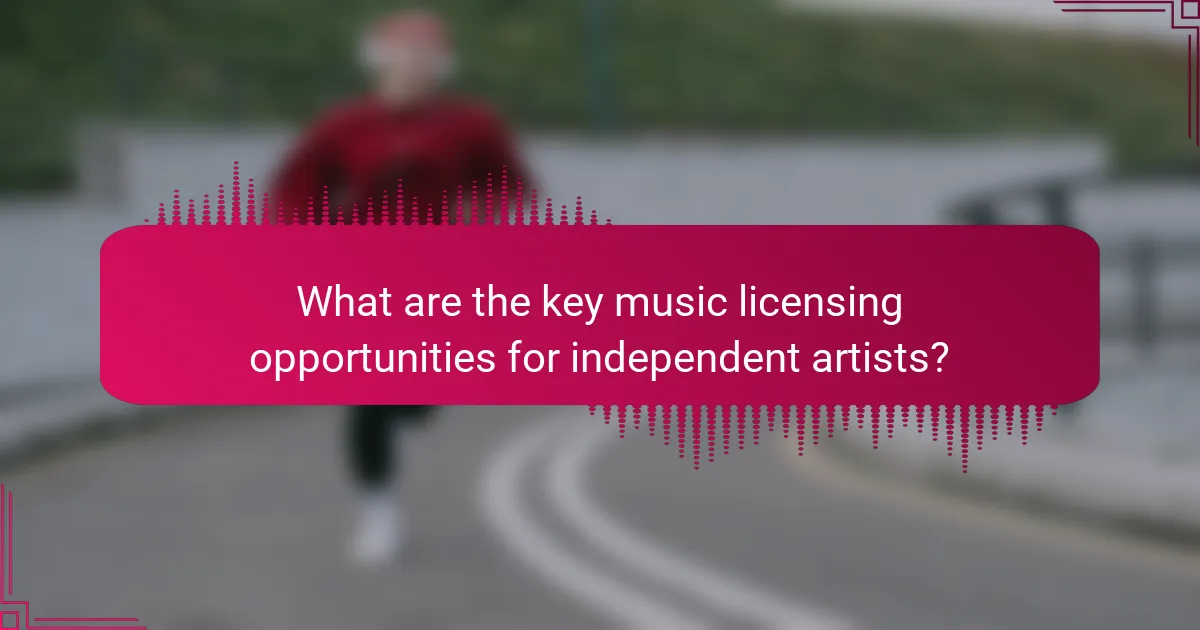
What are the key music licensing opportunities for independent artists?
Independent artists can explore various music licensing opportunities, including synchronization licensing, performance rights, and mechanical licensing. These avenues allow artists to earn revenue while gaining exposure.
Synchronization licensing involves placing music in visual media, such as films or commercials. This can significantly increase an artist’s audience reach. Performance rights licensing covers public plays of music in venues, earning artists royalties. Mechanical licensing pertains to the reproduction of music on physical or digital formats, providing another revenue stream.
Independent artists should actively seek out these licensing opportunities through platforms like music libraries, licensing agencies, and direct outreach to content creators. Building a strong online presence can enhance visibility and attract potential licensing deals.
How do synchronization licenses benefit independent musicians?
Synchronization licenses provide independent musicians with opportunities to earn revenue and gain exposure. These licenses allow artists to have their music used in visual media, such as films, TV shows, and commercials. This exposure can lead to increased fan engagement and potential sales. Additionally, synchronization licenses often come with upfront fees and ongoing royalties, creating a financial incentive. By leveraging these licenses, independent musicians can enhance their visibility and establish valuable industry connections.
What is the role of performance rights organizations in music licensing?
Performance rights organizations (PROs) play a crucial role in music licensing by managing the rights of songwriters and composers. They collect royalties on behalf of artists when their music is performed publicly, whether through live performances, radio broadcasts, or streaming services. PROs ensure that artists receive fair compensation for their work, which is vital for independent artists seeking to monetize their music. By joining a PRO, artists gain access to various licensing opportunities that can enhance their income streams. Additionally, PROs provide valuable resources and support for navigating the complexities of music licensing, making them essential partners for independent musicians.
Which types of mechanical licenses are available to independent artists?
Independent artists can access several types of mechanical licenses, including compulsory licenses, direct licenses, and synchronization licenses. Compulsory licenses allow artists to reproduce and distribute music without seeking permission, provided they pay the statutory rate. Direct licenses involve negotiating terms directly with the copyright owner, offering flexibility in usage. Synchronization licenses are required for pairing music with visual media, such as films or advertisements. Each type serves distinct purposes and offers unique benefits for independent artists in monetizing their work.
How can independent artists leverage digital streaming platforms for licensing?
Independent artists can effectively leverage digital streaming platforms for licensing by utilizing their extensive reach and audience engagement. These platforms provide opportunities for revenue generation through royalties, exposure, and collaboration. Artists can submit their music to various streaming services, ensuring their tracks are available for licensing in films, commercials, and other media. Additionally, platforms often offer analytics tools that help artists understand their audience, enhancing future licensing strategies. By actively promoting their work and networking within the industry, independent artists can maximize their licensing potential.

What benefits do music licenses provide to independent artists?
Music licenses provide independent artists with legal protection, revenue opportunities, and access to wider audiences. They enable artists to monetize their work through various platforms while ensuring compliance with copyright laws. Additionally, obtaining a license can enhance credibility and facilitate collaborations with brands and other artists.
How does music licensing enhance revenue streams for artists?
Music licensing significantly enhances revenue streams for artists by providing diverse income opportunities. Independent artists can earn money through sync licensing, performance rights, and mechanical royalties. Sync licensing allows artists to have their music featured in films, commercials, and video games, generating substantial earnings. Performance rights organizations collect fees when music is played publicly, ensuring artists receive compensation. Mechanical royalties arise from the sale of physical and digital copies of music, contributing to ongoing revenue. By leveraging these licensing opportunities, artists can diversify their income and gain greater financial stability.
Why is music licensing crucial for brand partnerships?
Music licensing is vital for brand partnerships as it ensures legal use of music, enhances brand identity, and fosters artist collaboration. Proper licensing allows brands to connect emotionally with audiences, increasing engagement and loyalty. Independent artists gain exposure and revenue opportunities through brand associations, creating a mutually beneficial relationship. Additionally, licensed music can elevate marketing campaigns by aligning with brand values and messaging.
What are the legal protections offered through music licensing?
Music licensing offers legal protections that ensure artists retain rights to their work while allowing for its use by others. These protections include copyright enforcement, revenue generation through royalties, and the ability to control how music is used in various media. For independent artists, music licensing can safeguard their creative output and provide financial support through licensing agreements. Additionally, these legal frameworks help prevent unauthorized use and ensure that artists are credited appropriately.
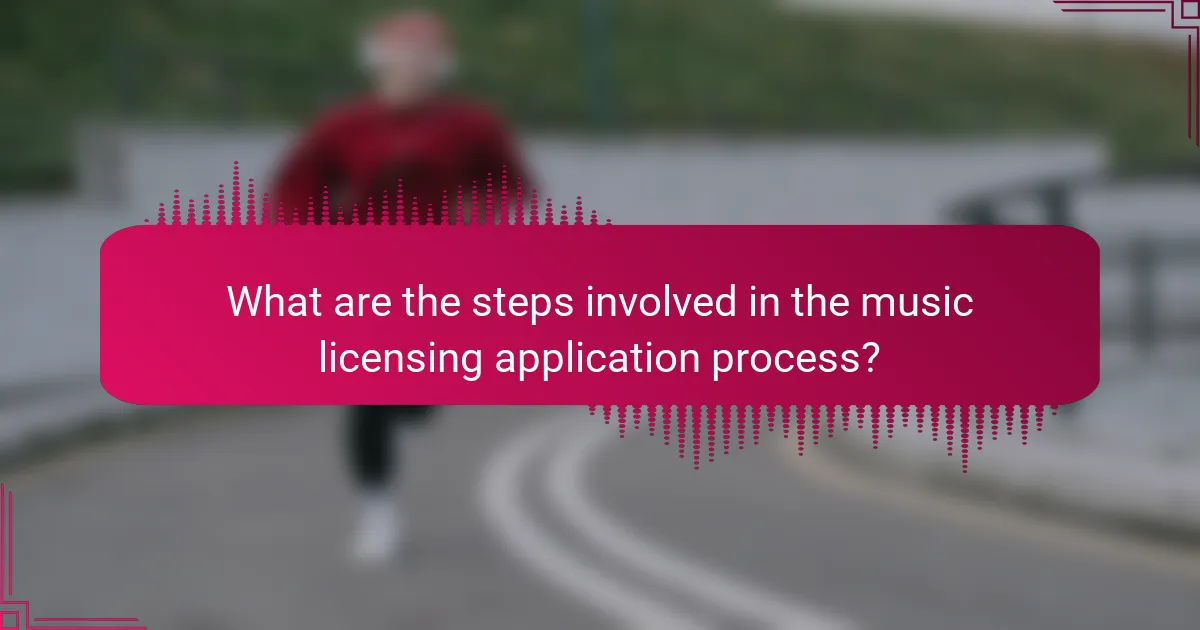
What are the steps involved in the music licensing application process?
The music licensing application process involves several key steps that independent artists must follow. First, identify the type of license needed, such as synchronization or mechanical rights. Next, gather necessary materials, including the music track and any required documentation. Then, submit the application to the appropriate licensing body or platform. After submission, track the application status and respond to any requests for additional information. Finally, upon approval, ensure compliance with all licensing terms and conditions.
How can independent artists prepare their music for licensing submissions?
Independent artists should focus on high-quality recordings, clear metadata, and a professional presentation to prepare their music for licensing submissions. Start by ensuring your tracks are mixed and mastered professionally to meet industry standards. Include detailed metadata, such as song title, artist name, genre, and contact information, to facilitate easy identification and communication. Create a compelling pitch that outlines the unique aspects of your music, highlighting its potential use in various media. Lastly, research and target specific licensing opportunities that align with your music style for better chances of success.
What documentation is required for successful music licensing applications?
Successful music licensing applications require specific documentation, including a completed application form, proof of ownership, and a sample of the music. Additional documents may include a performance rights organization registration and a licensing agreement template. These elements ensure clarity in rights and usage.
Which platforms facilitate music licensing applications for independent artists?
Platforms that facilitate music licensing applications for independent artists include Songtradr, DistroKid, and Artlist. These platforms streamline the licensing process, allowing artists to monetize their music effectively. Songtradr offers a marketplace for licensing, while DistroKid provides distribution and licensing services. Artlist focuses on providing high-quality music for filmmakers and content creators. Each platform has unique features that cater to different needs in the music licensing space.
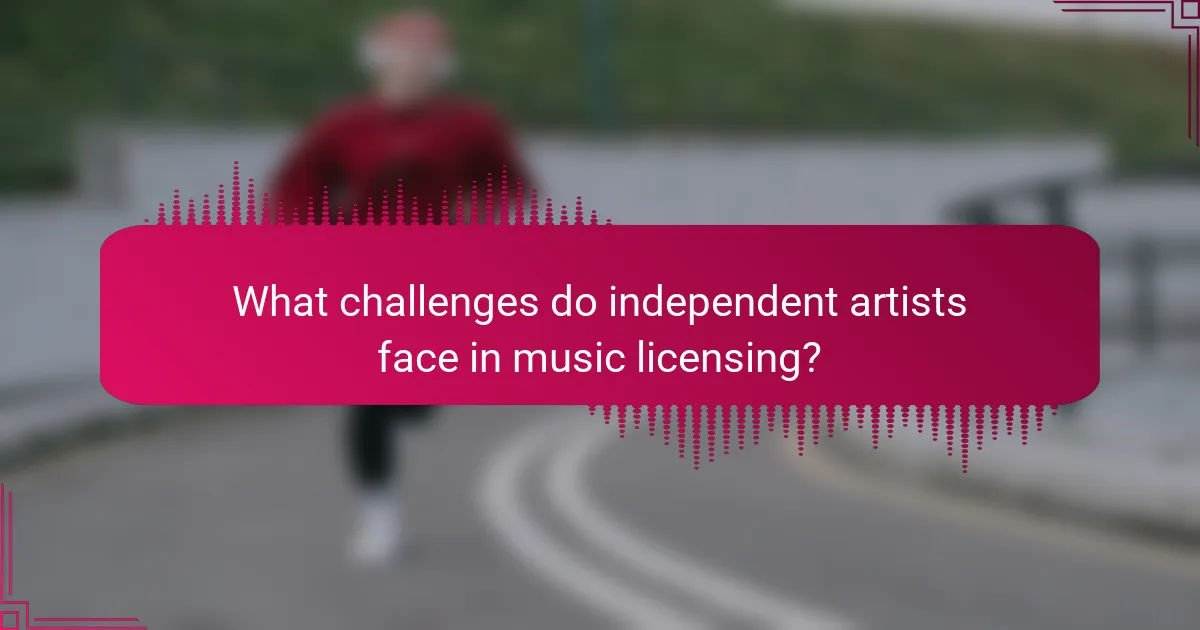
What challenges do independent artists face in music licensing?
Independent artists face several challenges in music licensing, including navigating complex legal frameworks and limited resources. They often struggle with understanding copyright laws, which can lead to unintentional infringements. Additionally, securing fair compensation can be difficult due to the competitive nature of the industry. Independent artists may also lack access to industry connections, limiting their ability to negotiate favorable licensing agreements. Furthermore, the upfront costs associated with licensing can be prohibitive, particularly for those with limited financial backing.
How can independent artists navigate copyright issues in licensing?
Independent artists can navigate copyright issues in licensing by understanding their rights, using clear contracts, and seeking legal advice when needed. They should explore various licensing types, such as mechanical, synchronization, and performance licenses, to maximize their opportunities. Understanding the benefits of each type can help them choose the right path for their work. Additionally, staying informed about copyright law changes will aid in protecting their creations effectively.
What are common misconceptions about music licensing for independent artists?
Many misconceptions exist about music licensing for independent artists, often leading to confusion. One common myth is that all music is free to use, which can result in legal issues. Another misconception is that licensing is only necessary for commercial projects, while it is essential for any public performance. Some artists believe that licensing is too complicated or expensive, but there are accessible options available. Additionally, many assume that once a song is licensed, they have complete ownership, which is not always the case. Understanding these misconceptions can help artists navigate the licensing landscape more effectively.
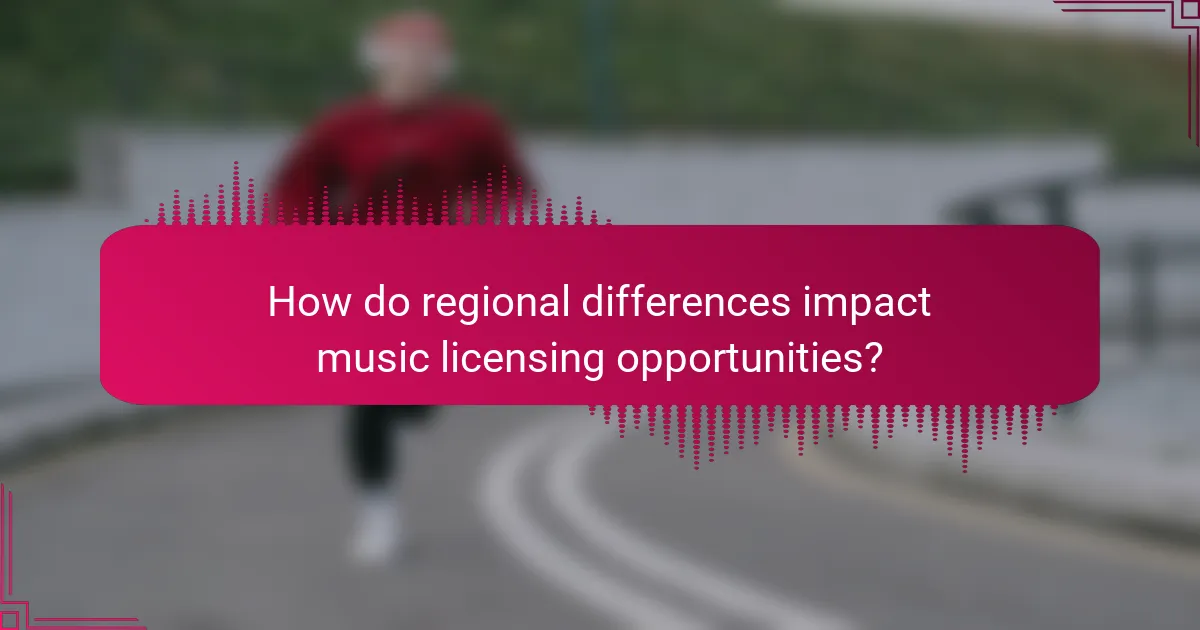
How do regional differences impact music licensing opportunities?
Regional differences significantly influence music licensing opportunities by affecting legal regulations, market demand, and cultural preferences. For instance, some regions have more stringent copyright laws, impacting how artists can monetize their work. Additionally, local music trends can shape the types of licenses that are more sought after, such as synchronization licenses for film and TV. Understanding these regional nuances allows independent artists to tailor their licensing strategies effectively, maximizing their reach and revenue potential.
What unique licensing practices are found in the UK music industry?
The UK music industry features unique licensing practices that enhance opportunities for independent artists. Notably, the PRS for Music and PPL provide distinct licensing frameworks. PRS focuses on performance rights, while PPL covers recorded music usage. These organizations facilitate revenue generation through various channels, including live performances and digital streaming. Independent artists benefit from these frameworks by gaining access to broader distribution and exposure, allowing them to monetize their work effectively.
How does the US music licensing landscape differ from other regions?
The US music licensing landscape is more complex than in many other regions due to its diverse legal framework. The US has multiple licensing organizations, such as ASCAP and BMI, which manage performance rights. In contrast, other regions often have centralized systems, simplifying the process for independent artists. Additionally, the US places a strong emphasis on mechanical and synchronization licensing, which can be less regulated elsewhere. This complexity offers unique opportunities for independent artists to explore various revenue streams, but it also requires a deeper understanding of the application processes involved.

What expert tips can help independent artists succeed in music licensing?
Independent artists can succeed in music licensing by understanding the market, networking effectively, and showcasing their unique sound. Building relationships with music supervisors and attending industry events can open doors.
Utilize online platforms to distribute music and gain visibility. Create a professional portfolio that highlights licensing-ready tracks. Stay informed about industry trends and legal aspects to navigate contracts confidently.
Consider collaborating with other artists to expand reach and diversify offerings. Regularly update your catalog to keep content fresh and appealing to potential licensors.
Which strategies optimize the chances of securing music licenses?
To optimize chances of securing music licenses, independent artists should focus on building strong relationships, understanding licensing types, and presenting high-quality work. Networking with industry professionals enhances visibility and opportunities. Familiarity with different licensing categories, such as synchronization and mechanical licenses, allows for targeted applications. Additionally, maintaining a professional portfolio showcases artistic quality, increasing appeal to potential licensors.
What common mistakes should independent artists avoid in the licensing process?
Independent artists should avoid common mistakes in the licensing process to maximize their opportunities. Key errors include neglecting to read contracts thoroughly, failing to understand rights and royalties, not keeping accurate records of their work, overlooking the importance of networking, and underestimating the value of proper marketing. Each mistake can lead to lost income or missed opportunities.


